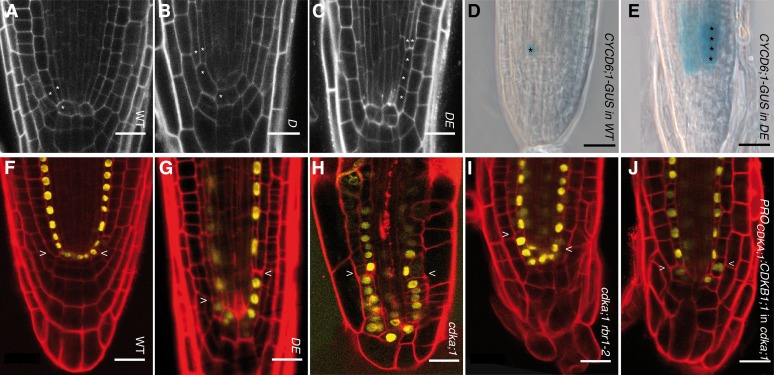Figure 2.
Formative Divisions in the Root Correlate with CDKA;1 Activity Levels.
(A) In wild-type (WT) roots, the cortex-endodermis initial next to the quiescent center produces a cortex-endodermis initial daughter cell that rapidly divides asymmetrically, giving rise to a cortical and endodermal cell.
(B) and (C) In weak loss-of-function cdka;1 mutants, the initial daughter division is delayed so that an initial daughter is present for a longer time (B), or due to continued divisions of the initial (C), files of undivided initial daughter cells are generated.
(D) CYCD6;1:GUS marks the initial daughter in the wild type.
(E) The additional cell files in DE are also marked by CYCD6;1:GUS, indicating their fate as initial daughters.
(F) to (J) The expression pattern of ProSCR:SCR:YFP, marking quiescent center, cortex-endodermis initial, cortex-endodermis initial daughter, and endodermal cells, is similar in the wild type (F), weak loss-of-function cdka;1 mutants (G), null cdka;1 mutants (H), and cdka;1 rbr1-2 (I) and ProCDKA;1:CDKB1;1 (J).
In (A) to (C), a single asterisk indicates cortex-endodermis initials and their daughter cells. The formative division gives rise to an endodermis and cortex cell, which is marked by two asterisks. Bars = 20 µm.

